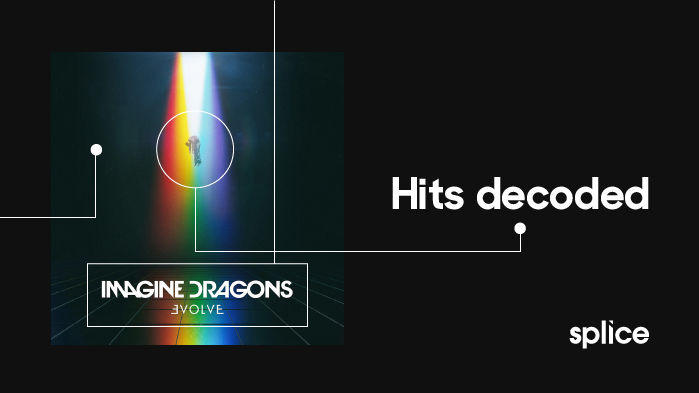In our latest installment of our Hits Decoded series, we take a look at Imagine Dragons’ “Believer” and dissect the musical elements that make it a hit.
1. All about that triplet
“Believer” has a lot of forward momentum. That’s in no small part because of the time signature: 12/8 (one-and-a, two-and-a, three-and-a, four-and-a). If you can’t recall the last time you heard a top 10 pop song written in 12/8, that’s because compound time signatures are a rarity in the pop world. (We could think of two — “The Sweet Escape” by Gwen Stefani and Akon and “U Smile” by Justin Bieber. If others come to mind let us know in the comments section!)
The natural swing-feel of songs written in 12/8 and 3/4 is what gives “Believer” its swagger. The intense forward feel of “Believer” is most clearly heard during the second half of the pre-chorus where lead singer Dan Reynolds, singing in clear triplets, pushes the song toward the big chorus drop.
2. Voice leading
Written in Bb minor, the”Believer” chord progression goes from Bb minor to Gb major to F major with an A in the bass. The F major is out of place — it’s the F minor chord that “belongs” in a Bb minor scale. That alteration — raising the Ab of an F minor chord to an A to make an F major chord — is further emphasized with the A in the bass. What is this surprise major chord accomplishing? That A note is just one half step away from the root note, Bb, and the movement from the A to the Bb contributes to that somewhat creepy, almost dissonant sonic melodic nature of the song. The melodies that emerge from the movement from one note to another in adjacent chords is called voice leading, and you can read more about it here.
3. Verse chorus contrast
What makes a great chorus? Well, for one, it’s got to be big. And one way to make a chorus feel super big is to make your verses super sparse. That’s the method employed in “Believer.”
The verses in “Believer” are pared back. They’re mostly percussive, with the chords arpeggiated on guitar, and a hint of bass appearing here and there. The choruses slam, though. The bass comes in full force, giving the chorus weight and depth. Similarly, a single lead vocal in the verse and pre-chorus is accompanied by layers and layers of vocals that create an anthem-like feel in the chorus. But perhaps what packs the biggest punch for the chorus is what immediately precedes it: a riser that clears the air and builds anticipation before the chorus drops.
Are these techniques worth trying out in your music? Let us know in the comments below.
Spark inspiration for your music with expertly-curated loops, one-shots, MIDI, presets, and more:
August 29, 2017

.svg)
.svg)




